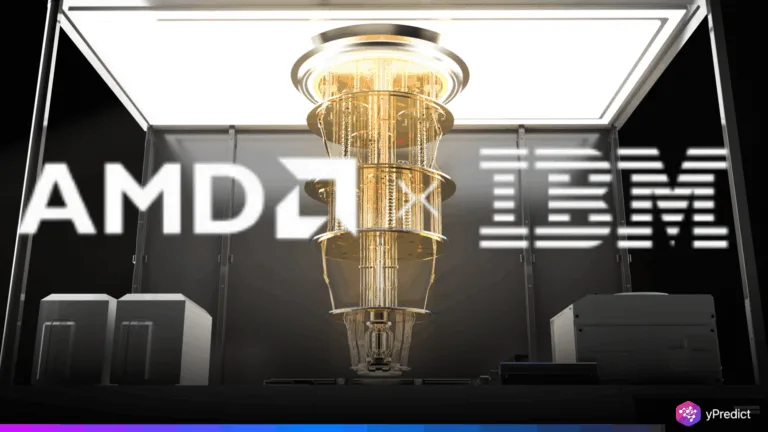
Vitalik Buterin, co-founder of Ethereum, has expressed worries that quantum computers could be a real threat to modern cryptography in the next decade. Buterin recently opined that there was a 20% chance quantum computing and cryptography would clash before 2030 and could ultimately make systems securing digital communication, financial transactions and blockchain networks, inactive.
Buterin’s comments are indicative of a significant problem the technology world faces. Quantum computing has the power to change medicine, logistics and artificial intelligence. However, quantum computing could also change the cryptographic basis for digital security. Since Billions of people rely on cryptography every day, including online banking and blockchain-based assets, this matters.
If you take this warning seriously, and you are part of the blockchain community, it matters more than ever. Ethereum, Bitcoin, and many other decentralized systems are built on cryptographic algorithms. If those algorithms can be broken, it means that the security of the networks could be at risk. So the race to post-quantum cryptography has never been more urgent.
Why Quantum Computers Threaten Modern Cryptography
Today’s digital security relies on complicated mathematical problems that are infeasible for classical computers to solve. Both encryption methods we find in RSA and ECC are built on this principle of intractability.
Quantum computers don’t work in the same way. Quantum computers don’t compute peices of information, called bits, that are either 0 or 1. They function via individual pieces of information called qubits, that have the capacity to function in multiple states at the same time. This allows Quantum computers to function as information processing resources at orders-of-magnitude smaller scale than classical machines. Quantum computers can theoretically run Shor’s algorithm to crack the encryption that would take millions of years for a traditional computer.
If this implementation reaches real world status ahead of schedule, we could expose ourselves to unprecedented risk for the security of blockchain technology and digital infrastructure globally.
The 2030 Timeline: A Realistic Threat or Overstated Risk?
Vitalik’s estimate of a 20% chance by 2030 may be an aggressive view to some, but it was also based on real consideration. There had been numerous advances to the development of quantum hardware from ‘big tech’ and by academic and government research assistance. In addition, governments from around the world have invested heavily into these quantum initiatives as matter of national security and technological dominance.
Of course, there are people who will be sceptical about this estimate, and would argue that building a fault-tolerant, scalable quantum computer which can decrypt real world encryption, will be significantly more complex than media headlines indicate. Moreover, current generation machines have remained limited in capability, and have experienced issues with the stability of qubits and then probabilistic nature of error correction.
Whatever timeline and likelihood skew into the hypothetical, it is important that early preparations are made. Even if the full quantum threat isn’t a real threat by 2030, we still need time for the transition into post-quantum cryptography. The transition to post-quantum cryptography will take time, effort, testing, as well as the co-ordinated effort of countries across the planet. In particular, national, public and public blockchain networks, cannot risk leaving a commission which will usually result in a rushed, last minute denouement to the whole transition, or risk user assets and user trust.
The Race for Post-Quantum Cryptography
Fortunately, researchers are not sitting idle. In fact, the work to develop encryption techniques that are resilient to quantum attacks has been happening for several years. Organizations such as the U.S. National Institute of Standards and Technology (NIST) are in the process of finalizing the standards for the future of post-quantum cryptography.
For blockchain projects, moving all the way to quantum-resistant algorithms will be challenging but crucial, especially for things like Ethereum which has talked about possible pathways to migration, but there is also the challenge of requiring widespread adoption from various people in the decentralized networks. Planning the strategy will be key to successfully implement more resilient security without sacrificing performance, scalability, or user experience.
For some, there is even an innovative angle to this whole concept. If a blockchain implementation was to adopt quantum resistance early on, it may establish themselves as a security leader, while creating an attractor for users who value long-term trust.
What This Means for the Future of Blockchain Security
If Vitalik’s prediction comes true, the ramifications don’t end with Ethereum. The entire digital economy, including banking, communications and government, could be in jeopardy By undermining existing protocols, a single quantum computed break could risk not only financial assets, but also global trust in digital infrastructure.
A transition to quantum computers and cryptographic resilience will thus lead the next phase of cybersecurity. Blockchain security must start to evolve relative to the consequential injustices of ever-increasing dynamism; it must start to innovate before the disruption happens.
There will be no schedule, but there is one observation that is for sure: preparation is not an option anymore. To ignore the quantum computing threat to the digital systems that we now rely on for day-to-day activities could be disastrous.
Final Thoughts
Vitalik Buterin’s warning isn’t meant to create fear, but to inspire action. The mere 20% chance that quantum computers and cryptography will collide somewhere before 2030 should be enough to motivate action by developers, businesses, and policymakers.
The future of digital trust depends on the rate and speed of our transition. Whether it be by way of post-quantum cryptography or any other means, the path to getting there will require vigilance, interaction, and urgency.







